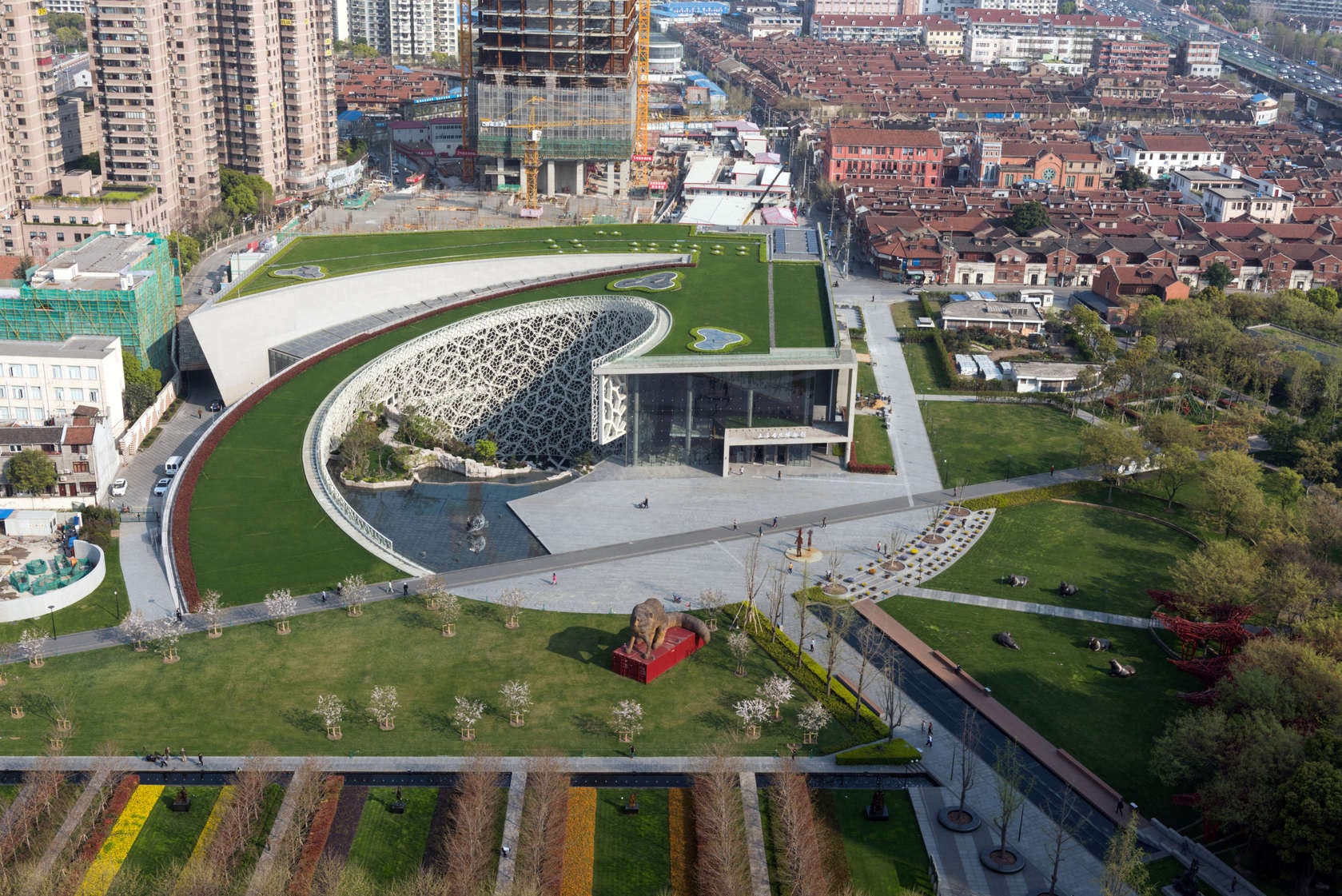Most architects strive to design buildings that maintain their quality over time and, better still, garner a semblance of historic significance over decades or even centuries. No matter how timeless our designs may be, though, their longevity pales into insignificance when compared with the stalwarts of nature.
Now, global firm Perkins+Will have created an architectural ode to these ancient elements of earth: their newly completed Shanghai Natural History Museum in Shanghai offers visitors the opportunity to explore the natural world through the display of more than 10,000 artifacts from all seven continents.


The building’s helical form is inspired by the spiraling structure of the nautilus shell and emerges from the terrain like a fossil in the process of being excavated by archaeologists. A 100-foot-tall atrium leads through to the centerpiece of the museum, an oval reflecting pool that alludes to traditional Chinese gardens.


Soaring perforated façades allow natural light to stream into the various exhibition spaces, their intricate latticework evoking the cellular structure of plants and animals. A stone wall to the north brings to mind images of shifting tectonic plates and canyon walls eroded by rivers. Finally, a living wall to the east symbolizes earth’s diverse vegetation.


The complex is closely linked to its surrounding terrain, with a curving green roof that reads as an extension of the surrounding sculpture park. The museum’s form and landscape design bear notable similarities to another civic building set for construction in China’s largest city, Ennead Architects’ Shanghai Planetarium, due for completion in 2018.
Yours historically,




